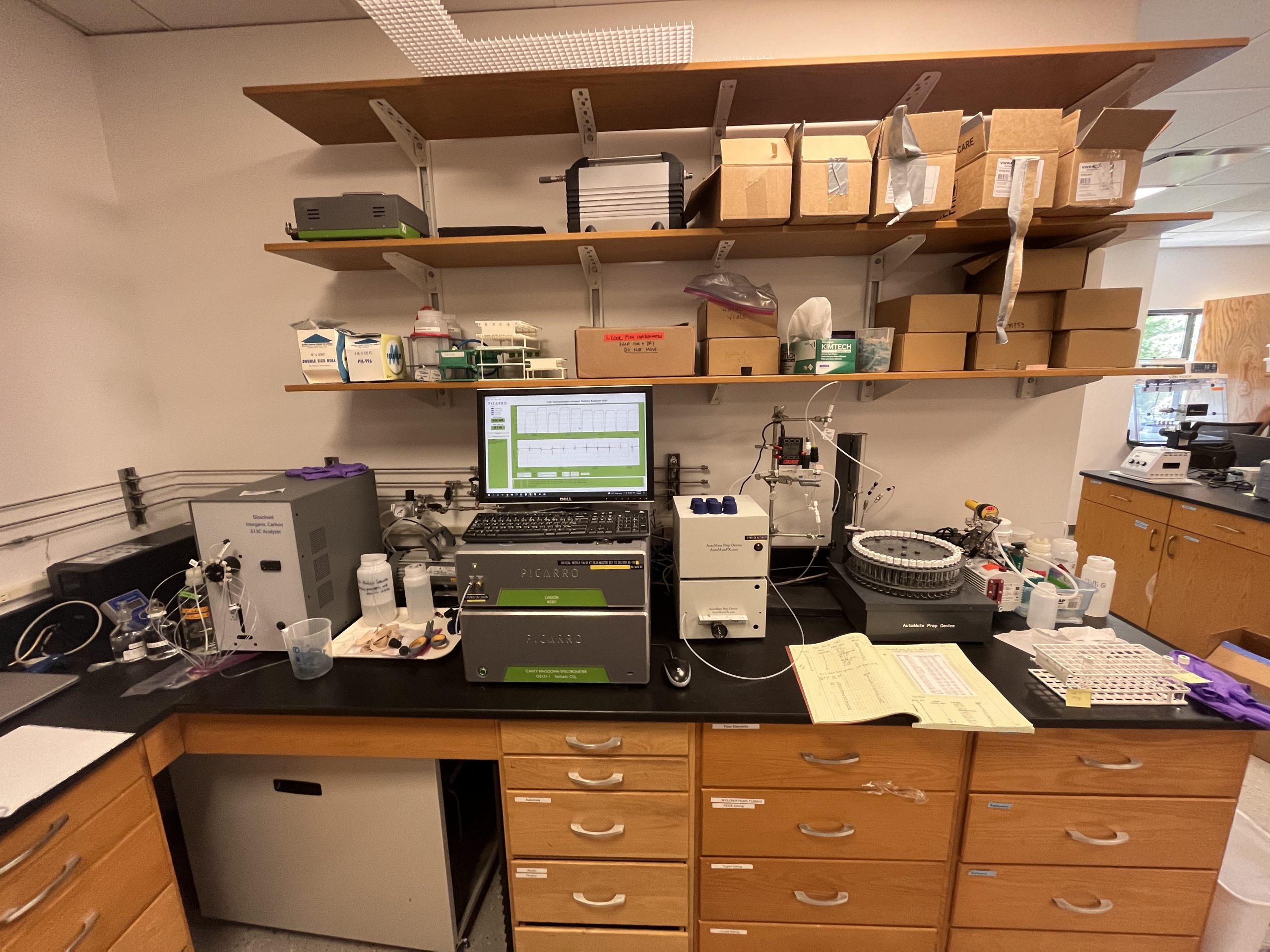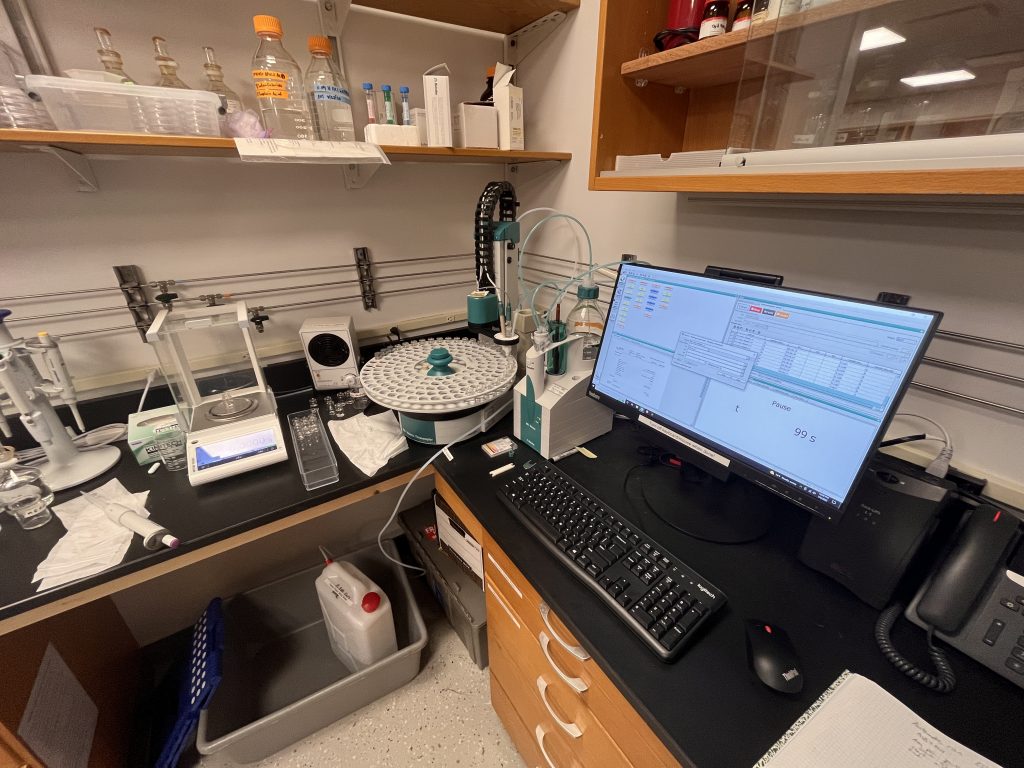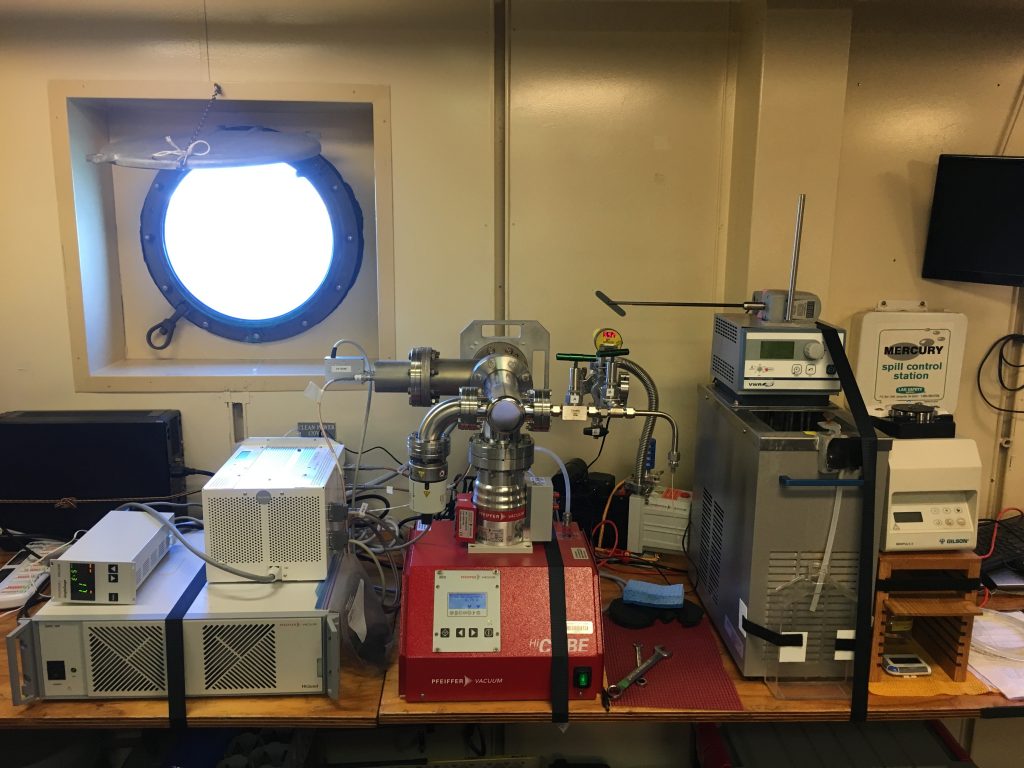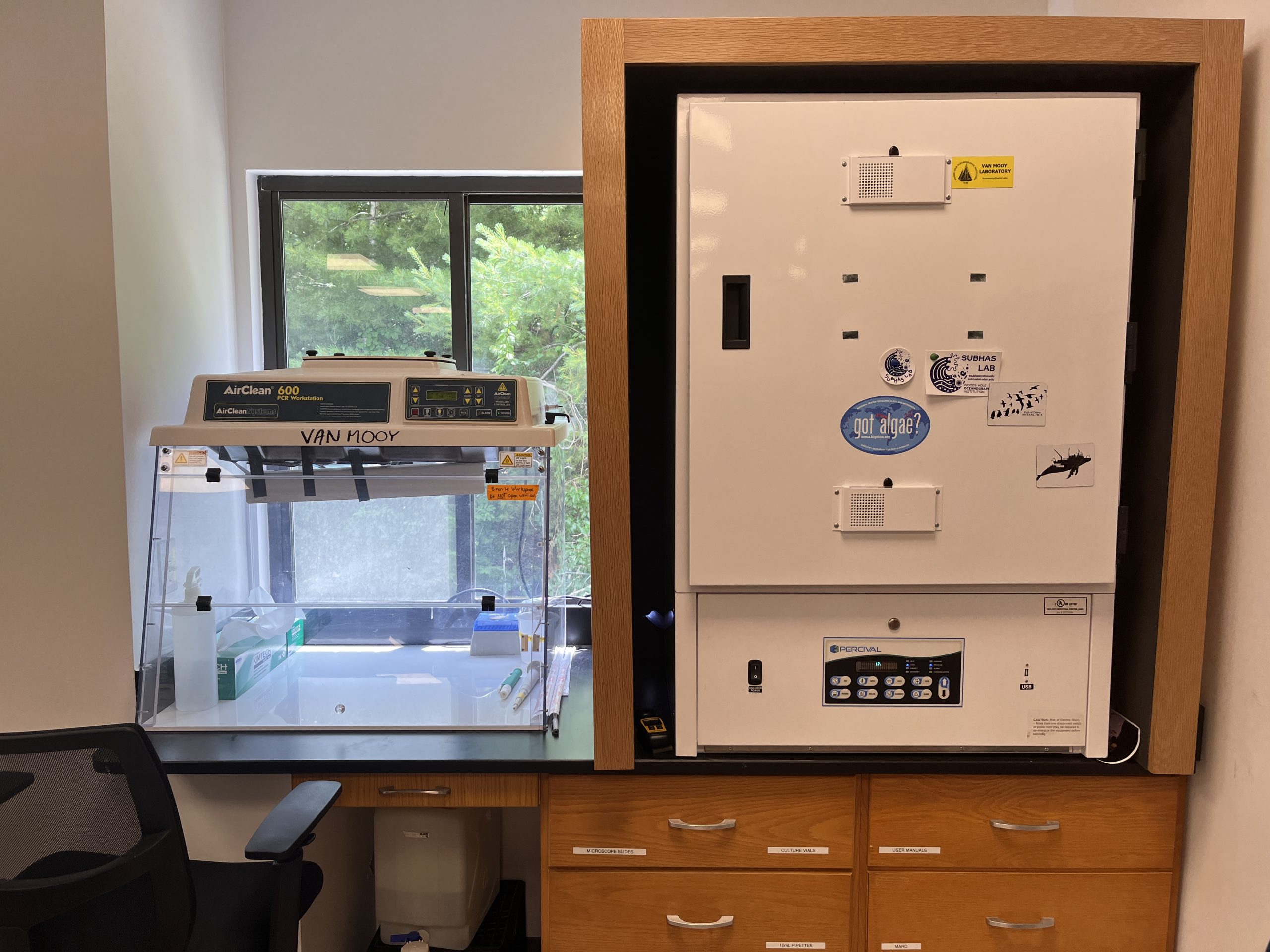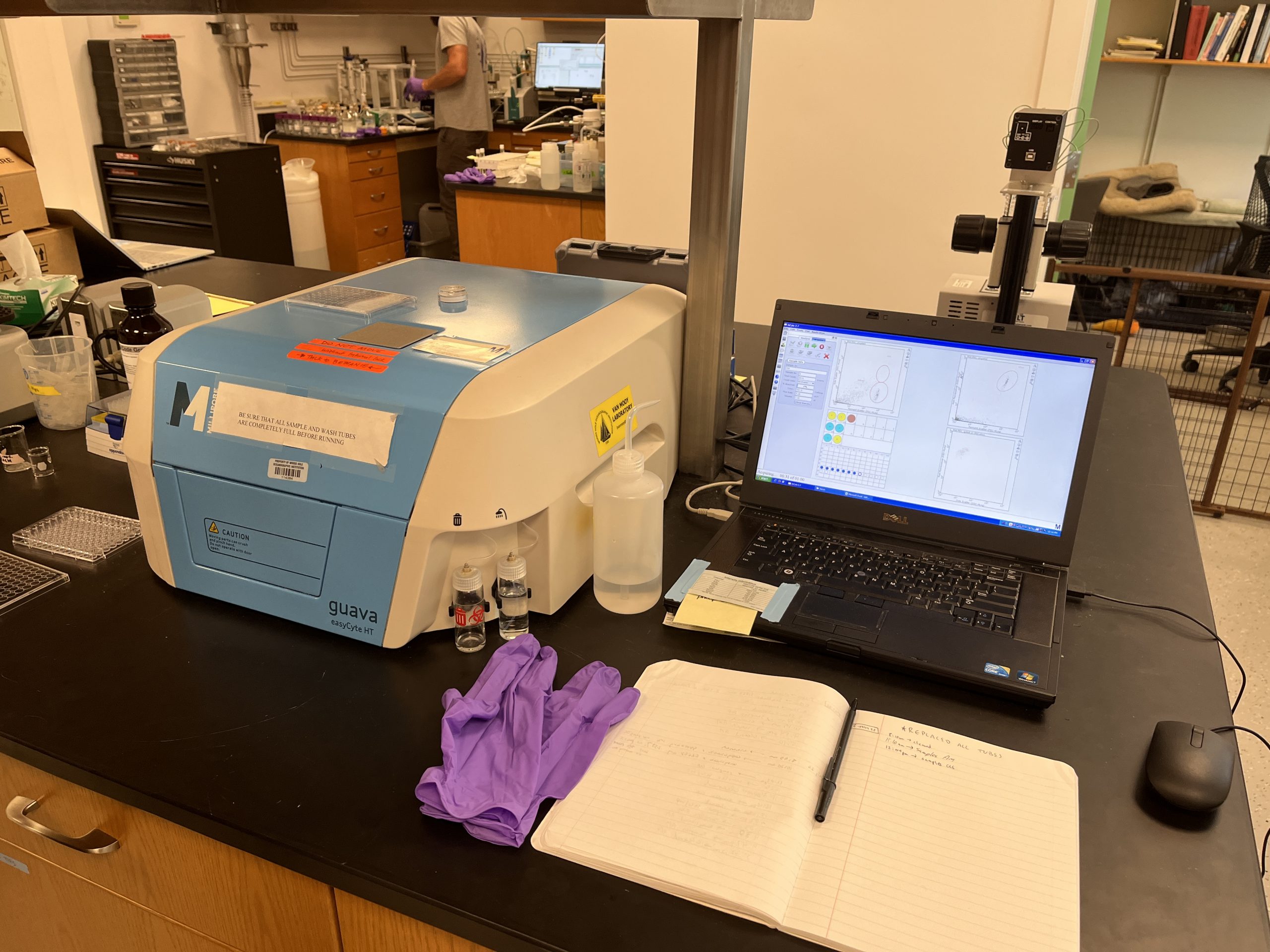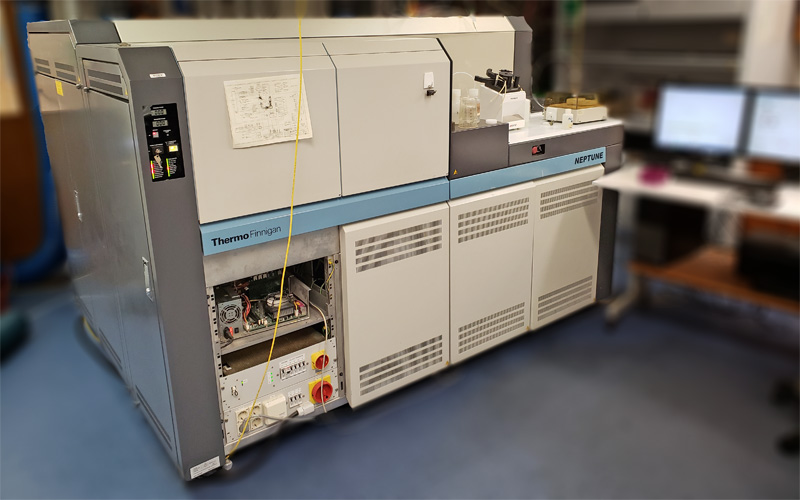Instrumentation
Our lab is based around making novel and precise determinations of carbon and alkalinity flows through marine biological and chemical systems. These instruments are set up to run environmental samples of total alkalinity and DIC, the δ13C of DIC, and the δ13C of CaCO3. We also have a membrane inlet mass spectrometer (MIMS) that we use to determine the activity of the enzyme Carbonic anhydrase (CA) in natural samples. We have facilities to culture various marine micro-organisms, and do a lot of work with 13C tracing of carbon.
Picarro Isotopic CO2 Analyzer
Our Picarro G-2131i is set up to measure CO2 and d13C-CO2 in all sorts of samples. The instrument is equipped with a customized AutoMate Prep Device to measure solid and liquid samples. We also have an Apollo AS-D1 front end that makes simultaneous high-precision analyses of DIC and d13C-DIC. We use this system to analyze natural and experimental samples, including tracer experiments using 13C labeling techniques. Examples of samples we've analyzed using our system:
- Particulate inorganic carbon (PIC) and d13C-PIC from large volume pumps, niskins, and sediment traps
- PIC content and d13C-PIC in marine sediments
- Seawater, porewater, and riverine DIC and d13C-DIC
- Cultured coccolithophore calcite
- Fish carbonates
- Volcanic CO2 and its d13C from Giggenbach samplers
- Something else? Contact us and we'll figure out a way to measure it!
Culturing Facilities
As Patrick Rafter said to me recently, "You're growing living things now." It's true! We have an incubator, UV hood, and flow cytometer, for experimental and observational work, particularly using coccolithophore and diatom cultures. We also grow microzooplankton thanks to a wonderful collaboration with Liz Harvey at UNH.
WHOI Plasma Mass Spectrometry Facility
We occasionally use inductively coupled plasma mass spectrometers (ICP-MS) to make measurements of metals in seawater and in carbonate shells. You can see the facility here
